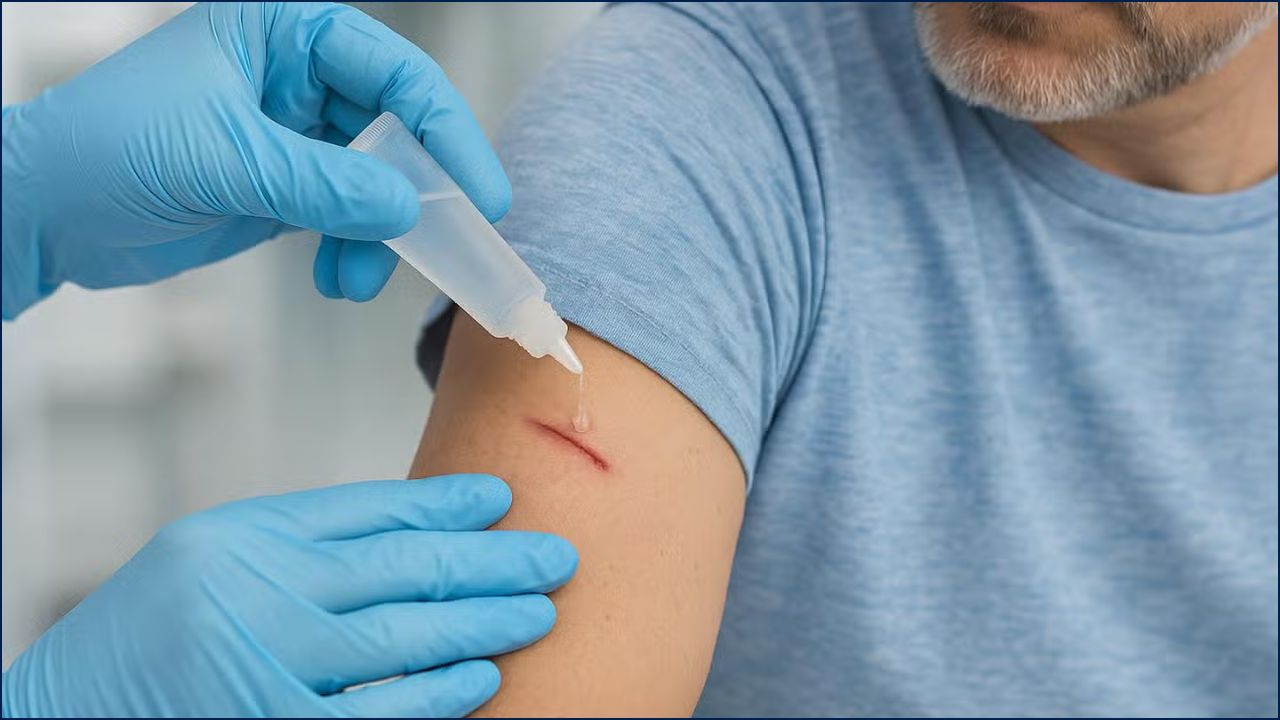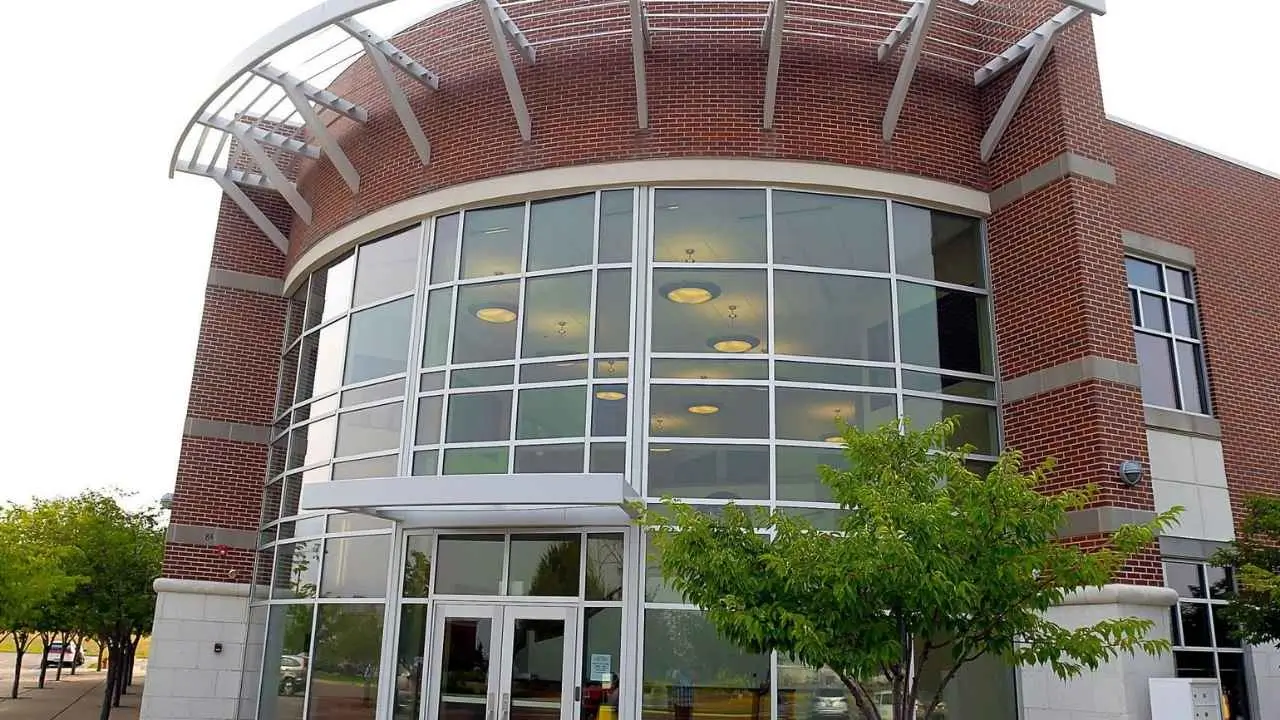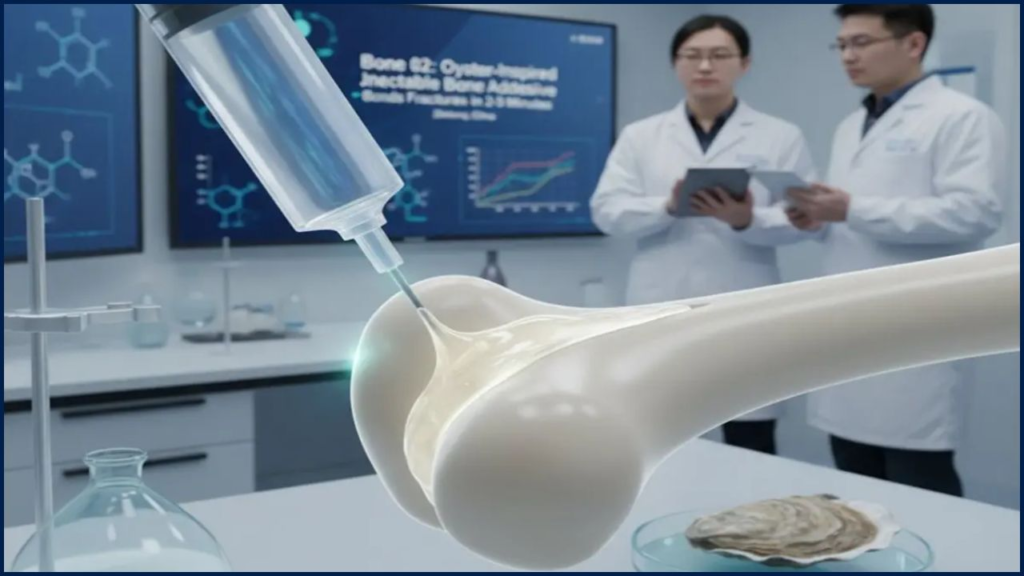
Chinese scientists have introduced a new Bone Glue that can fuse fractured bones in less than three minutes, offering a potential alternative to metal plates and screws used in millions of orthopedic surgeries worldwide. The innovation, developed by a team at Sir Run Run Shaw Hospital in Zhejiang Province, has shown promising results in early clinical trials and could mark a turning point in modern fracture treatment
Bone Glue
| Key Fact | Detail |
|---|---|
| Time to set | Under 3 minutes |
| Bonding strength | Over 400 pounds (181 kg) |
| Number of patients in trials | More than 150 |
| Key feature | Bio-absorbable, inspired by oyster adhesion |
A Breakthrough in Orthopedic Surgery
The newly developed Bone Glue, officially known as Bone-02, was created by a research team led by Dr. Lin Xianfeng at Sir Run Run Shaw Hospital in East China. Inspired by the adhesive power of oysters, the material can set and harden rapidly, even in blood-rich surgical environments.
Traditional orthopedic fixation methods rely on metal plates, screws, and rods, often requiring large incisions, extended operating times, and follow-up surgeries to remove the hardware. Bone Glue seeks to eliminate or minimize these steps, simplifying fracture treatment and potentially reducing complications.
“We wanted to create something that works with the body, not against it,” Dr. Lin said in a statement. “Bone-02 achieves secure fixation within minutes, allowing natural healing to take over as the material dissolves.”
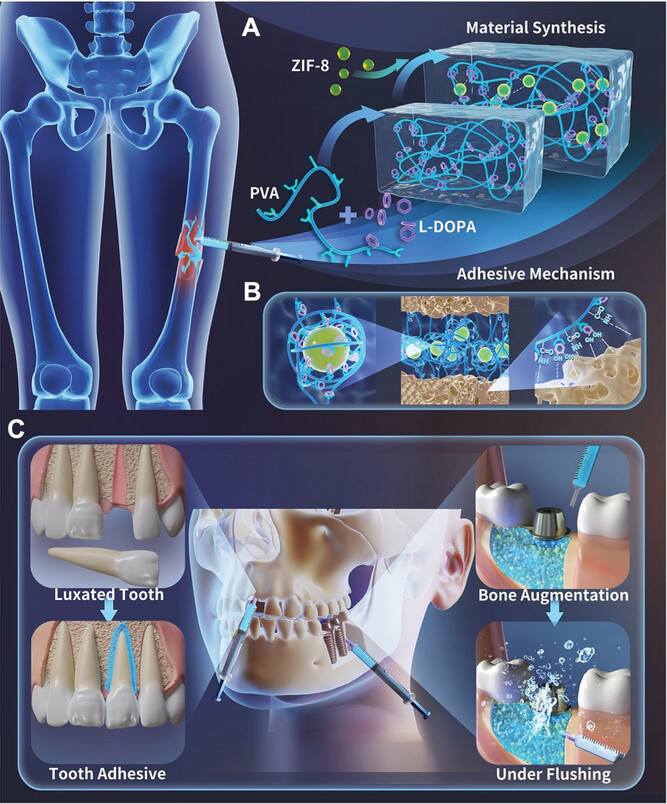
How Bone Glue Works
Inspired by Marine Biology
Oysters attach to underwater rocks through proteins that create a strong bond in wet conditions. The research team engineered a synthetic bio-adhesive hydrogel that mimics this mechanism. When applied to fractured bone, the glue penetrates microscopic pores and solidifies within two to three minutes.
Mechanical Strength and Healing
Early data show that the adhesive provides compressive strength of 10 MPa and shear strength of 0.5 MPa, surpassing the threshold required for stabilizing most common fractures. Over time, the compound gradually biodegrades, leaving behind newly formed bone tissue.
“Setting time is remarkably fast,” said Dr. Zhang Wei, an orthopedic surgeon who participated in the trials. “This is especially valuable in trauma cases where every minute counts.”
Why This Innovation Matters
The potential benefits of Bone Glue extend far beyond operating rooms. According to the World Health Organization (WHO), an estimated 130 million fractures occur globally each year, with a growing proportion linked to aging populations. Traditional hardware-based fixation can be expensive, time-consuming, and prone to complications such as infection, rejection, or hardware failure.
Bone Glue could:
- Reduce surgery time and patient recovery periods.
- Lower infection risk by minimizing incision size.
- Eliminate the need for removal surgeries in many cases.
- Improve accessibility in low-resource settings with limited orthopedic infrastructure.
“This is a fundamental shift,” said Dr. Emily Carter, Professor of Orthopedic Surgery at Johns Hopkins University. “If proven through broader trials, this technology could redefine how we treat fractures worldwide.”
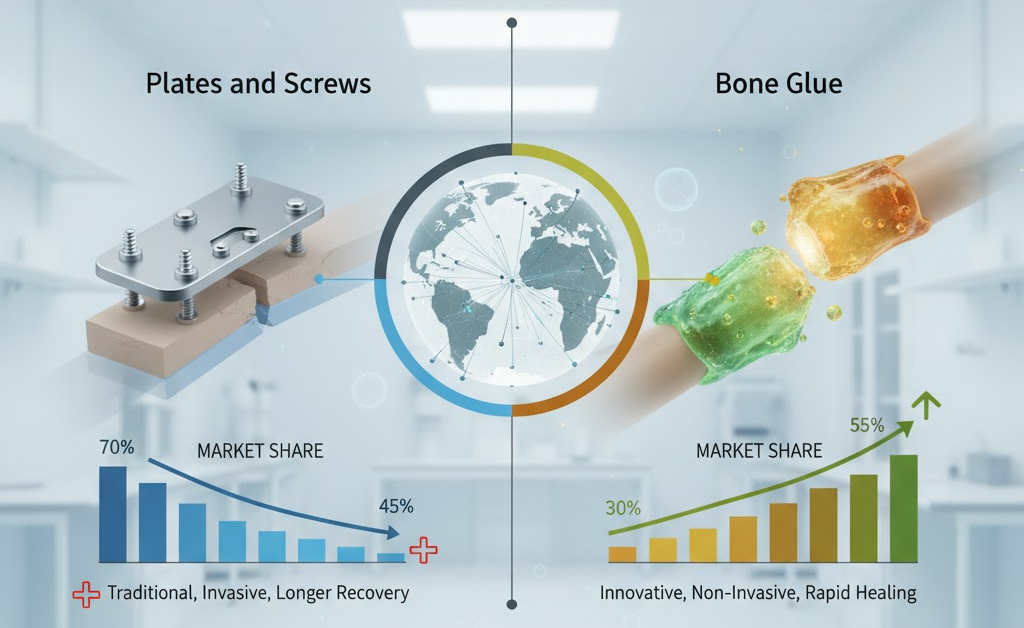
Historical Context: A Century of Fixation
Modern fracture fixation techniques have changed little since the early 20th century. Metal plates and screws, first widely adopted in the 1930s, revolutionized trauma care but remain largely invasive. Over the decades, efforts to create bone adhesives have repeatedly stalled due to challenges such as toxicity, poor bonding strength, or inability to work in wet environments.
- 1950s–1970s: Early acrylic-based adhesives proved too brittle and toxic.
- 1990s: Research focused on biological glues but lacked mechanical stability.
- 2000s: Hydrogel and polymer innovations advanced the field but failed in clinical translation.
- 2025: Bone-02 is the first candidate to show both rapid adhesion and biodegradability in human trials.
“This is not just another incremental improvement,” said Dr. Patrick O’Neill, an orthopedic materials scientist at the University of Cambridge. “It addresses the two biggest technical challenges — strength and biocompatibility — simultaneously.”
Expert Debate: Promise and Limitations
While excitement is widespread, experts urge caution. Some orthopedic surgeons note that adhesives may not be appropriate for all fracture types.
“Weight-bearing bones such as the femur or tibia present unique mechanical challenges,” explained Dr. Rachel Kim, trauma specialist at UCLA Health. “Bone Glue may work best for smaller fractures, minimally displaced fractures, or in pediatric cases, but complex injuries might still require hardware.”
Others raise questions about long-term outcomes. The adhesive’s performance beyond two years remains unproven, and regulators may require extensive follow-up data before granting broad approval.
Regulatory and Clinical Hurdles Ahead
Bone-02 is currently under regulatory review in China, with fast-track evaluation expected in 2026. Researchers have submitted data to the National Medical Products Administration (NMPA), China’s equivalent of the U.S. Food and Drug Administration (FDA).
For global deployment, the product will need approval from:
- FDA (United States)
- European Medicines Agency (EMA) (European Union)
- Other national health authorities
Regulatory agencies typically require large-scale, multicenter clinical trials to assess safety, efficacy, and consistency. International experts also stress the need for surgeon training programs and clear procedural protocols to ensure safe adoption.
“Any new surgical material must undergo rigorous testing,” said Dr. Anne-Marie Dubois, a regulatory affairs specialist at EMA. “But the early results are encouraging, and the potential public health impact is significant.”
Economic and Global Health Implications
Orthopedic implants are a $60 billion global industry, with annual growth driven by aging populations and trauma cases. If Bone Glue gains international approval, it could disrupt established markets and shift investment from hardware to biomaterials.
- Lower procedural costs: Shorter surgeries reduce operating room time.
- Improved access: Bio-adhesive kits may be cheaper and easier to distribute in rural or low-income regions.
- Market disruption: Major implant manufacturers could face competition from adhesive-based solutions.
“Cost is a critical factor,” said Dr. Miguel Alvarez, a health economist at the World Bank. “Technologies that reduce infrastructure demands can make high-quality care more accessible in developing countries.”
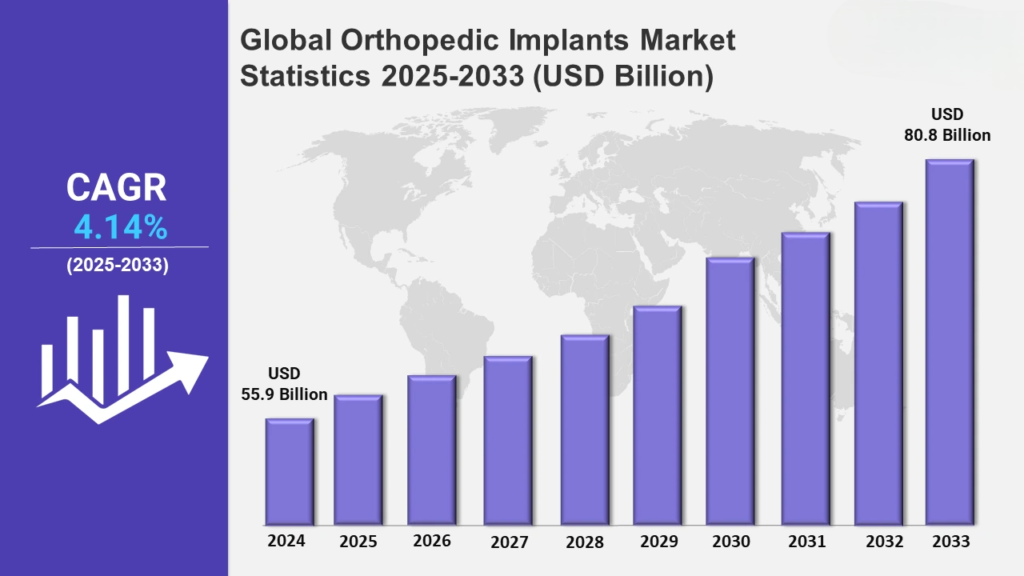
Human Impact: Stories from Early Recipients
In addition to technical data, early patient experiences have added momentum to the Bone Glue narrative. Li Hua, a 62-year-old patient from Zhejiang, suffered a wrist fracture in June and was treated using Bone-02 as part of the trial.
“I was out of the hospital the next day,” Li told reporters. “I didn’t need a second surgery. My recovery was much faster than my neighbors who had metal implants.”
Surgeons emphasize that these anecdotes, while encouraging, must be supported by structured long-term data. Still, they offer an early glimpse of how the technology could improve quality of life.
Global Collaboration and Research Roadmap
Following the Chinese trials, researchers are in discussions with universities and hospitals in the United States, Germany, and Japan to launch Phase II international trials. These will test Bone-02 across multiple fracture types, age groups, and healthcare systems.
A joint research initiative involving Zhejiang University, Johns Hopkins University, and Charité – Universitätsmedizin Berlin is already in development, according to sources close to the project. This cross-border collaboration could accelerate regulatory pathways and adoption.
Ethical Considerations and Accessibility
As with any medical breakthrough, questions of accessibility and affordability remain. Experts stress the importance of ensuring the technology does not widen the gap between high-income and low-income countries.
“Technologies that revolutionize care can also exacerbate inequalities if pricing isn’t addressed early,” warned Dr. Amina Yusuf, a global health policy expert at the University of Cape Town. “Equitable licensing and distribution will be essential.”
The Road Ahead
If Bone-02 passes international regulatory hurdles and proves its durability, it could represent the first major shift in fracture fixation in nearly a century. Its success will depend on rigorous data, cautious implementation, and collaborative oversight between researchers, regulators, and clinicians.
“Bone Glue is not a silver bullet,” Dr. Lin said. “But it has the potential to change the way we treat millions of patients around the world.”
FAQ About Bone Glue
What is Bone Glue?
Bone Glue (Bone-02) is a bio-adhesive designed to bond fractured bones quickly, eliminating or reducing the need for metal plates and screws.
Is it safe for all types of fractures?
Not yet. Early trials suggest strong results for non-weight-bearing and moderate fractures, but complex cases may still need traditional fixation.
When will it be available internationally?
Regulatory reviews are underway in China. Broader approval in the U.S. and Europe could take several years, depending on trial outcomes.
Will it make orthopedic surgery cheaper?
Potentially yes. Experts believe Bone Glue could reduce surgery time, hospital stays, and the cost of implants, especially in resource-limited settings.


